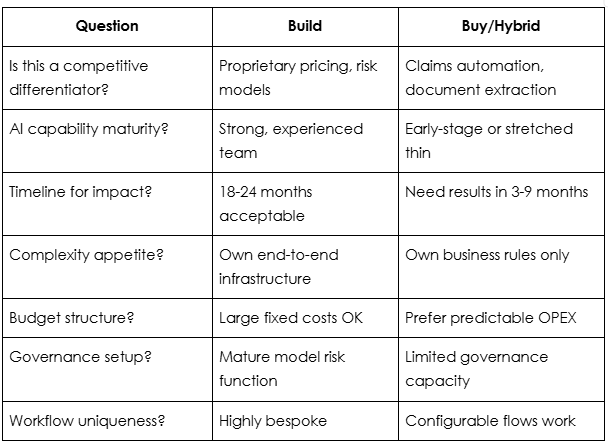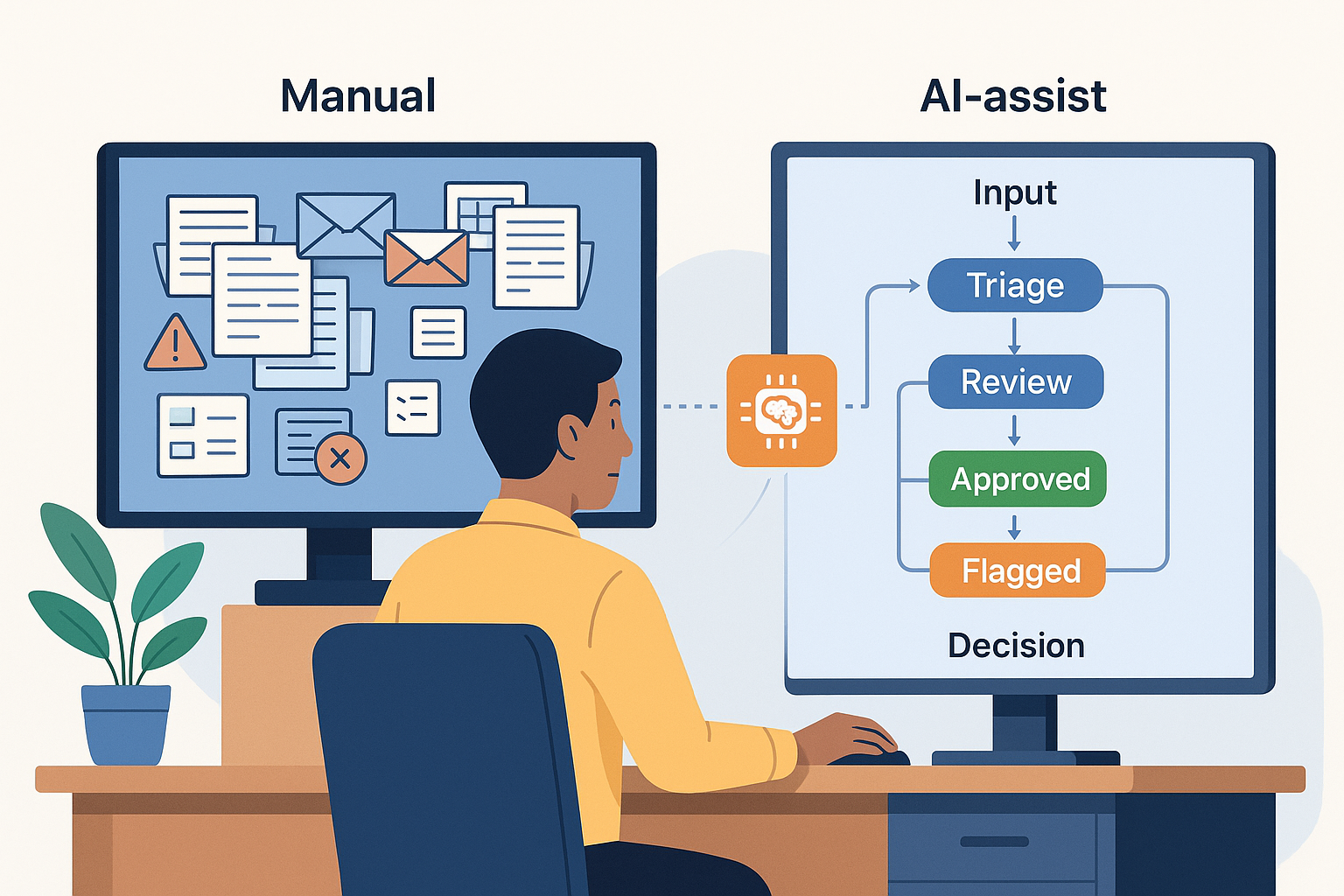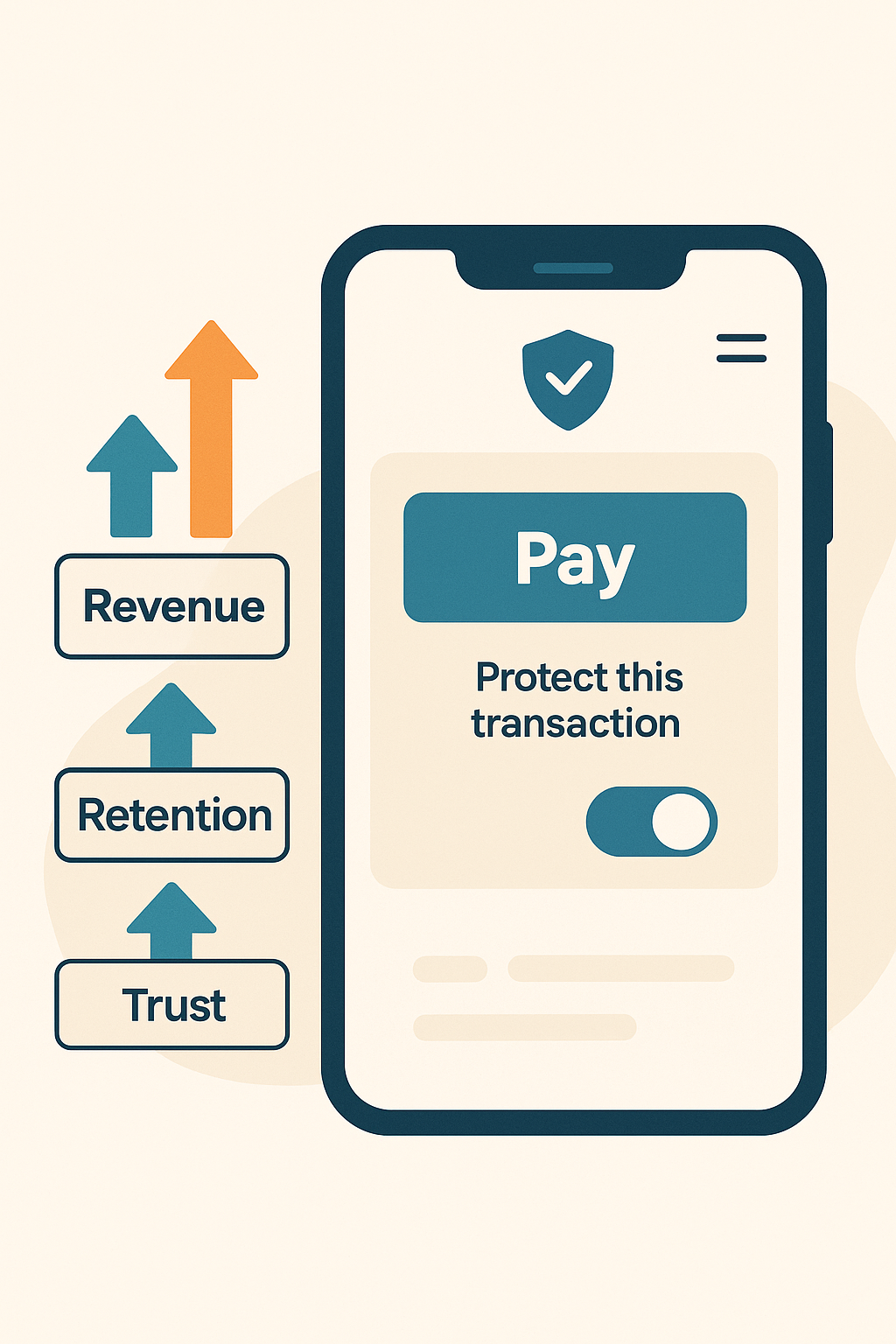Build vs Buy: The Insurer’s Guide to Implementing AI Solutions
If you're a CTO or digital leader at an insurer, you're probably wrestling with this: Should we build AI capabilities in-house, or partner with a specialized platform?
Get it wrong, and you'll burn time and budget on endless pilots. Get it right, and you'll ship measurable impacts in months.
Here's how to make the call.
Why This Decision Matters

AI's moved from "nice to have" to operational reality. Customers expect instant decisions. Regulators want explainability. Your board wants ROI.
The real question isn't "build or buy" – it's "where should we invest our limited resources to create actual competitive advantage?"
What Building Really Means

Building production-grade AI in insurance means:
- Connecting and cleaning data from core systems
- Hiring ML engineers, data scientists, and MLOps specialists (expensive and scarce)
- Building training pipelines, monitoring systems, and compliance frameworks
- Maintaining everything as fraud patterns evolve and products change
Timeline: 12-24 months to production impact
Hidden costs: Talent retention, model maintenance, integration overhead, ongoing compliance

Build when:
- The use case is core IP or a major competitive differentiator
- You've got a strong, stable AI team already
- You can commit 3-5 years, not just one budget cycle
What Partnering Looks Like
Modern AI platforms give you speed and capability while you keep control of business logic.
You get:
- Pre-built claims automation, document understanding, and fraud detection
- Integration-ready APIs for your existing systems
- Compliance and monitoring included
- Continuous improvements from cross-industry learnings
Timeline: 3-9 months to production impact
Cost structure: Predictable OPEX vs. large fixed engineering costs
Partner when:
- The capability is important but not unique to your business
- You need visible impact quickly
- You'd rather invest in customer experience than infrastructure
The Decision Framework

Run through these questions with your team:

If most answers lean right, you're in Buy/Hybrid territory.
Why Hybrid Often Wins

The smartest insurers use a hybrid approach:
Platform handles: Claims intake, document processing, fraud detection, workflow orchestration
You own: Pricing strategy, risk appetite, business rules, customer experience
Result? You get speed from the platform and differentiation from your unique logic.
Where Curacel Fits

We're AI infrastructure for insurers, especially across Africa and emerging markets.
We handle:
- Claims automation and validation
- Document understanding (policies, receipts, medical reports)
- Fraud detection and routing
- Integrations with your core systems
You keep:
- Your risk appetite and business rules
- Your customer experience
- Your competitive differentiation
We're not replacing your strategy – we're helping you execute it faster.
Your Next Steps
1. Pick one concrete use case – e.g., "Automate claims under $X" or "Flag suspicious motor claims"
2. Run the framework above – Be honest about capabilities and timelines
3. Design for production – What does this need to look like at scale in 12 months?
4. Talk to Curacel – Where Buy/Hybrid makes sense
Ready to explore what this looks like for your organization?
Book a demo – We'll have a practical conversation about your specific use case.
Subsribe to our newsletter to receive weekly content
























.svg)





